sonofgrok said:Rice and yeast type probably played a role too.
It's sweet short grain rice recommended by my Asian grocery and the yeast balls in the yellow and red package that I've seen several times in this thread.

sonofgrok said:Rice and yeast type probably played a role too.
Any ideas?
Any ideas?
Did you just steal a small scoop and eat it as is?
Interesting. I find this statement odd. The proportion of long chain carbohydrates to short grain carbohydrates in a grain of rice is directly related to the length of the grain. The longer the grain of rice, the higher the proportion of long chain carbohydrates. Long chain carbohydrates are sticky, or gluey. So, long grain rice is usually listed as glutinous or sticky.After a bit of searching i found that the moisture content of "perfectly cooked" long grain rice is between 58% and 64%. For glutinous/sweet/sticky rice it is about 75%. All this depends on the exact rice type and the the diner's preference of course.
WesleyS said:Rice wine assembled. Now the wait.
bottlebomber said:Whatcha got against 1 gallon jars?
Any ideas?
Like I said, I found this online and haven't tried it myself yet, but I imagine
SGfinal would be what you have after the boil with the addition of water. Whereas SGorig is what you have right before you boil. I understand we can't use the hydrometer because we start with a solid, that's how I came across this equation while researching how to get an accurate abv reading
 Question: How do you reply to more than one post without having to respond individually to each one? Is that even possible?
Question: How do you reply to more than one post without having to respond individually to each one? Is that even possible? bottlebomber said:I had a small shot glass full of mine tonight at 10 days. It is fruity and tart with some sweetness, and this is definitely 20% alcohol if not more based on the vapors and warmth in the chest and stomach. I want to eisbock this!
WesleyS said:Did you use 100% sweet rice in yours? Just curious.
bottlebomber said:Yes, mine was all sweet rice. Next time I think I am going to mix sweet and basmati.
I found this on a webpage for anyone interested in the abv of their wine.
I haven't tried it myself, but it said take a gravity reading, take 250ml of your final product, boil it until its 125ml, then add 125ml of water to bring it back to 250ml, take another reading and use this equation.
AbV=((SGfinal-SGorig)/2.11)*1000
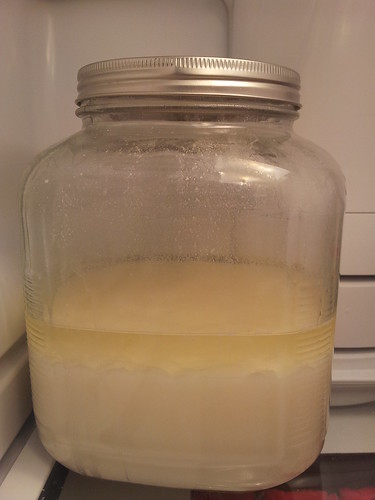
WesleyS said:My batch I made Thursday night is forming a good amount of liquid so it looks like I did something right. I also have white fuzz over the top of the rice. Looks like that fake cobweb Halloween decoration stuff. I'm assuming this is normal based upon past posts in this thread.
WesleyS said:My batch I made Thursday night is forming a good amount of liquid so it looks like I did something right. I also have white fuzz over the top of the rice. Looks like that fake cobweb Halloween decoration stuff. I'm assuming this is normal based upon past posts in this thread.
Here is what my Sake looks like after being in the fridge for about a week:
Is this separation normal? Will it clear up further? Should I give it more time?
Not sure what to do at this point other than drink it =)
bottlebomber said:It could be that the higher water content makes the lacto a little more mobile. I know mine was VERY wet, and I definitely have a pronounced tart note. I'm going to fruit this batch up, so I figure the tartness will work well. Next batch I'm going to go drier to test out your findings, grok.
Here is what my Sake looks like after being in the fridge for about a week:
Is this separation normal? Will it clear up further? Should I give it more time?
Not sure what to do at this point other than drink it =)
Ostomo517 said:Shouldnt you take the rice out of the jar if its done?
So getting the fuzz after a week but I dont see any additional liquidation. Going to try to heat it up. Why did he pasturize the beer bottles I havent read anyone else doing that and can I bottle it when done in a normal wine bottle?
Also I remember reading the post on how long it lasts but I cant find it again can someone remind me or the page it was on thanks!
Grok's right, I got the idea from the "stovetop pasteurizing" sticky in the cider forum. Except I held mine at a lower temperature for a much longer time.Why did he pasturize the beer bottles I havent read anyone else doing that and can I bottle it when done in a normal wine bottle?
Traditional wine is pasteurized to halt fermentation before it's aged. There's a big temperature window where you can kill the critters without the alcohol boiling off. if you're worried about it, keep a lid on the pot so the vapors condense and drip back into the wine.Someone mentioned batch pasturization, I assume basically adding the wine in a pot and heating....wouldnt this change flavor even possibly burn off alcohol?
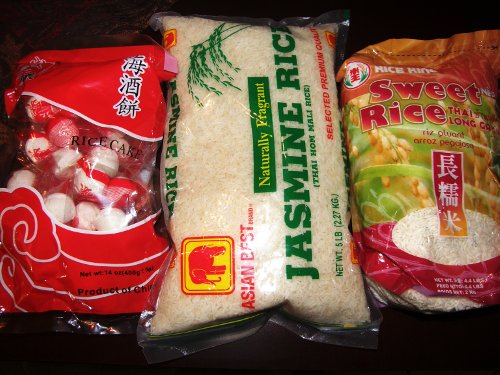

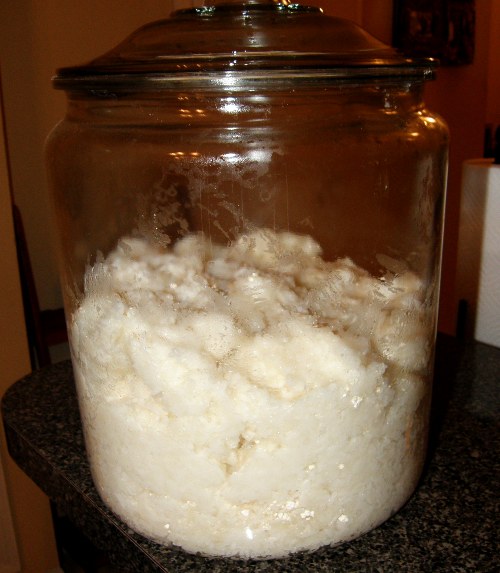
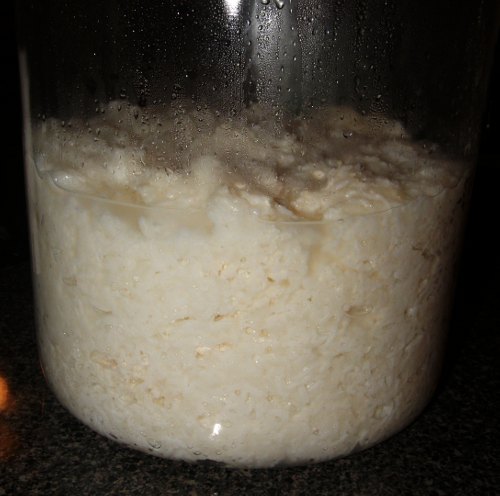
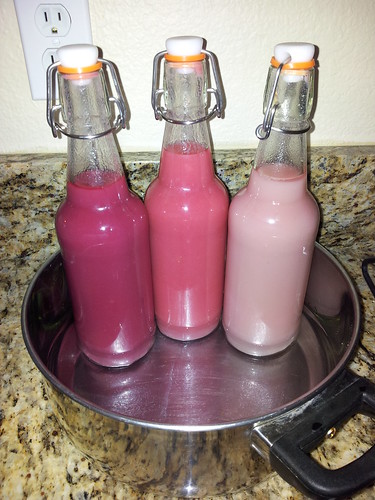
Bottled my sake tonight....yielded about 6 cups, or enough to fill 3 16oz bottles:
From left to right: Blackberry, Raspberry, Blueberry
After flavoring, it was SUPER tart, so I added some equal to it and it tasted much better!
I then pasteurized all 3, and now they are cooling off in the fridge...
ND
Enter your email address to join: